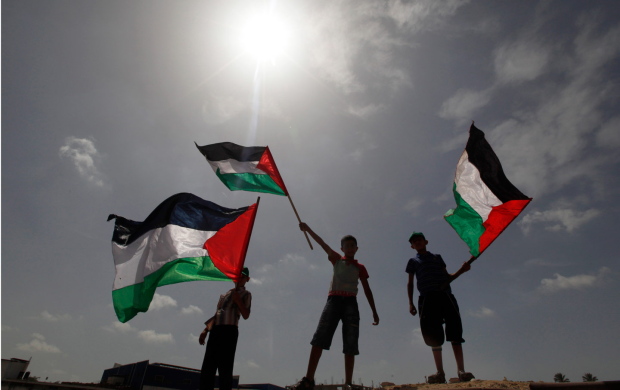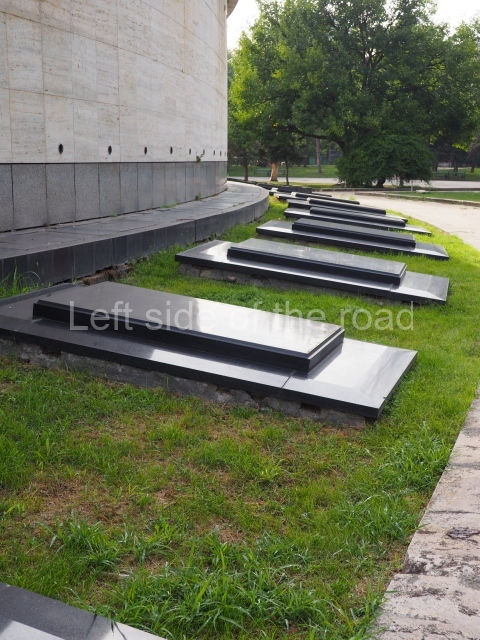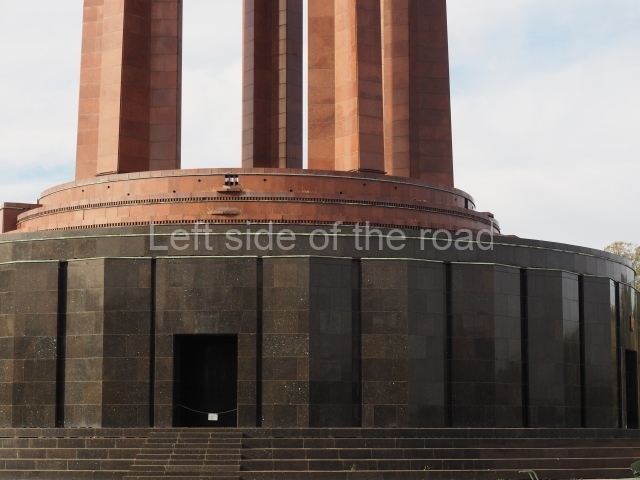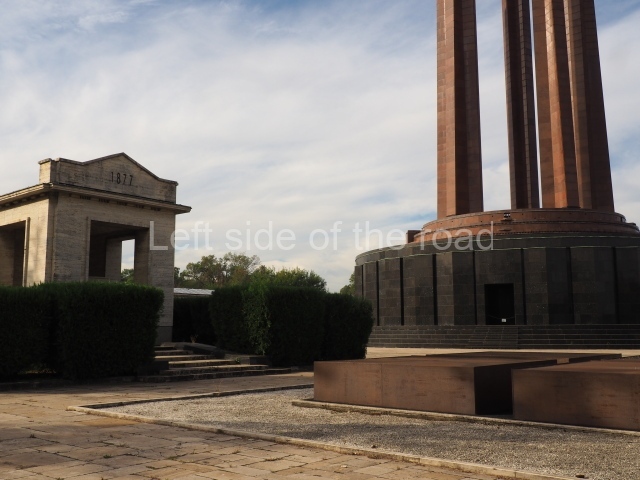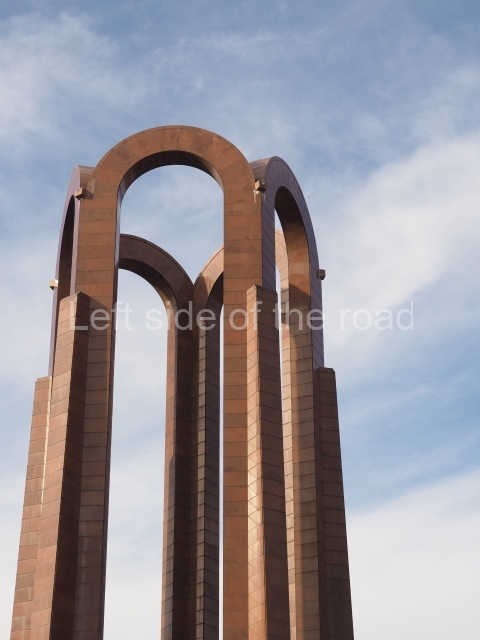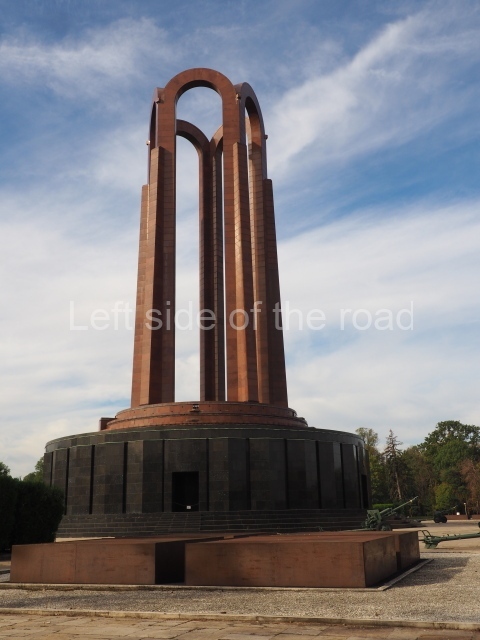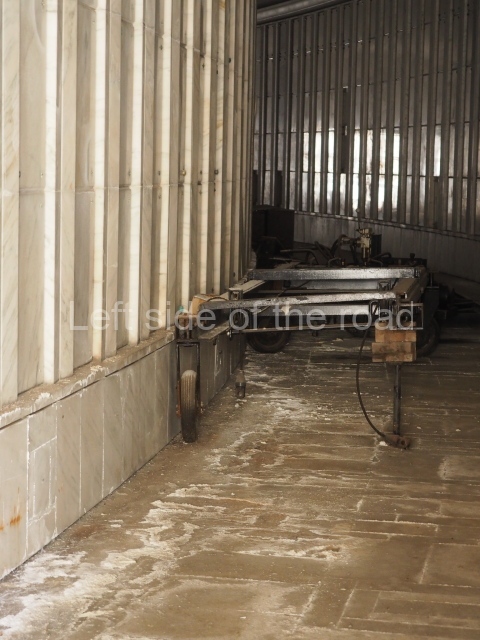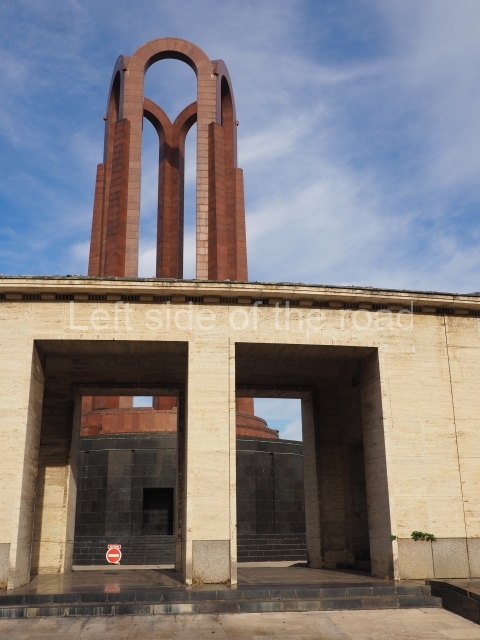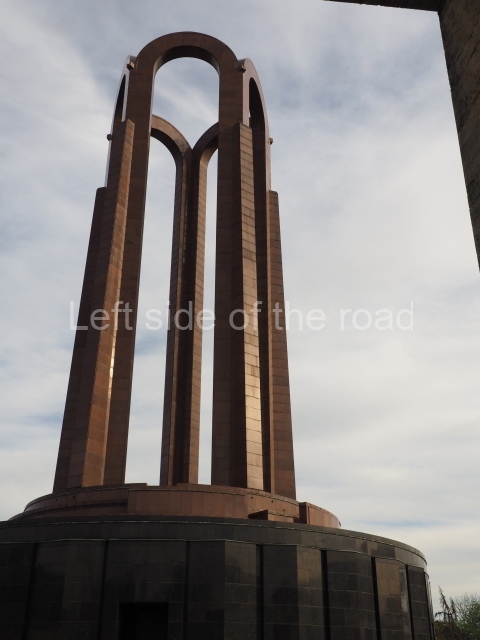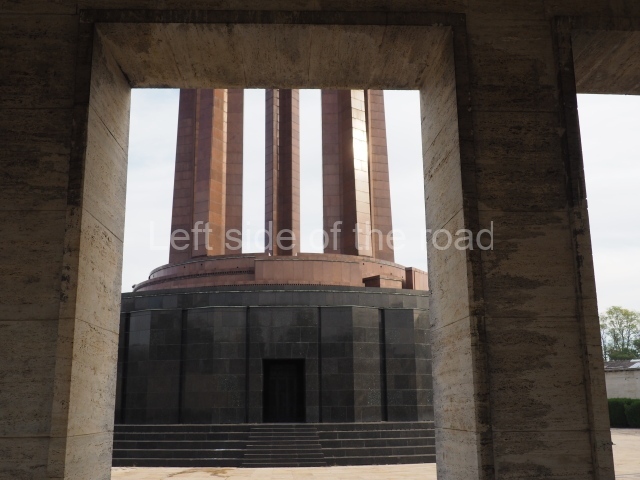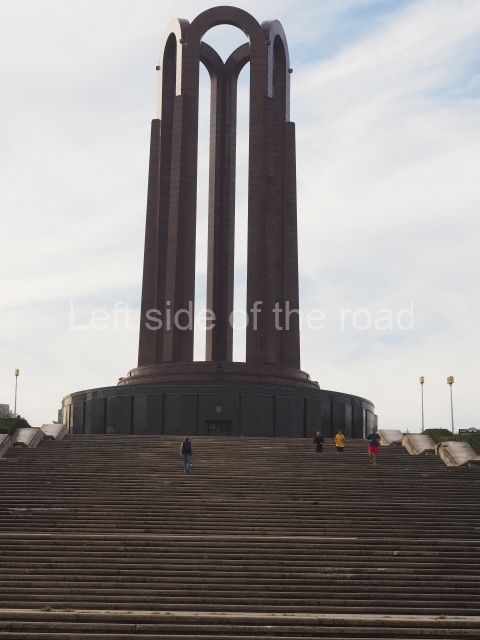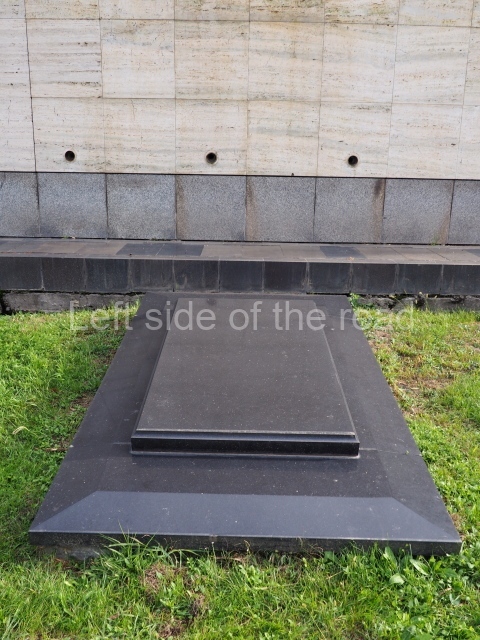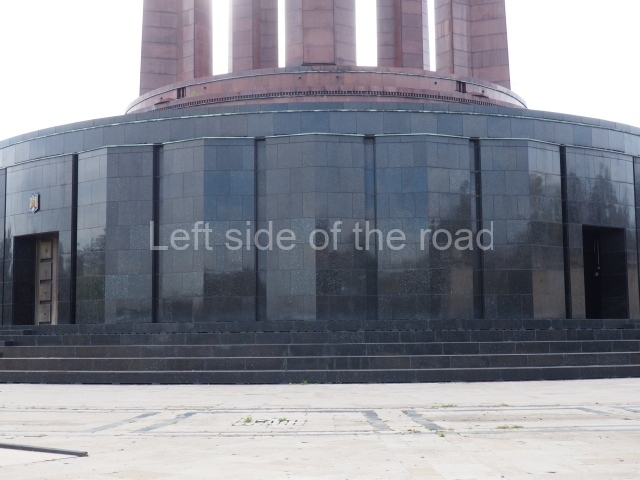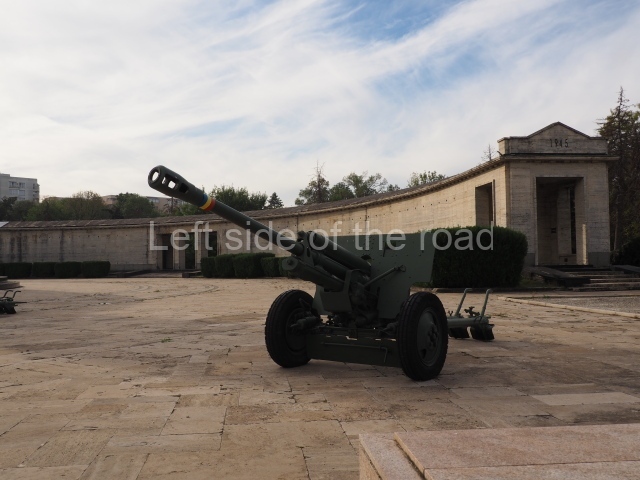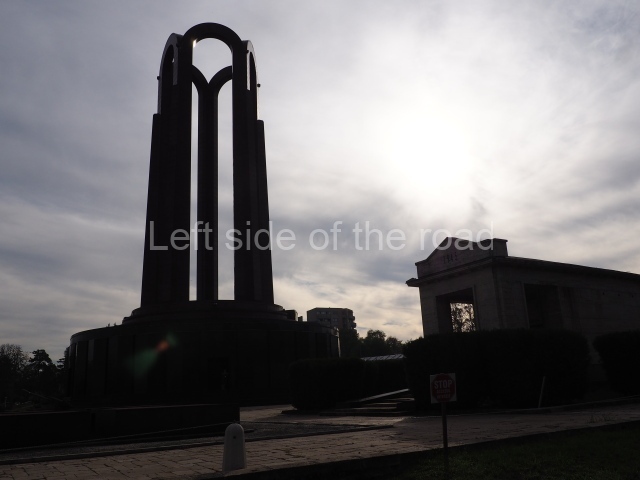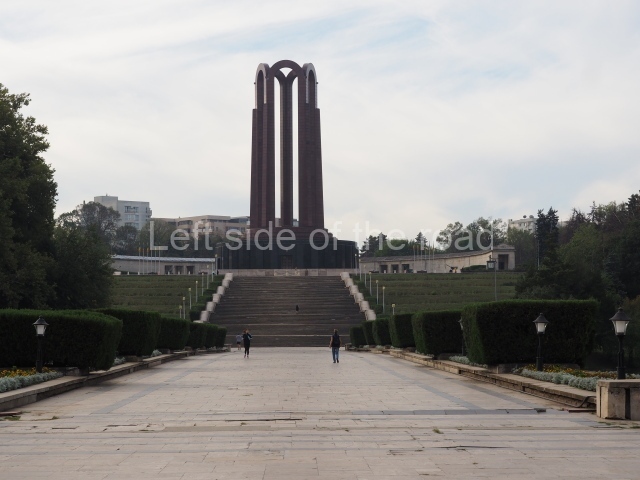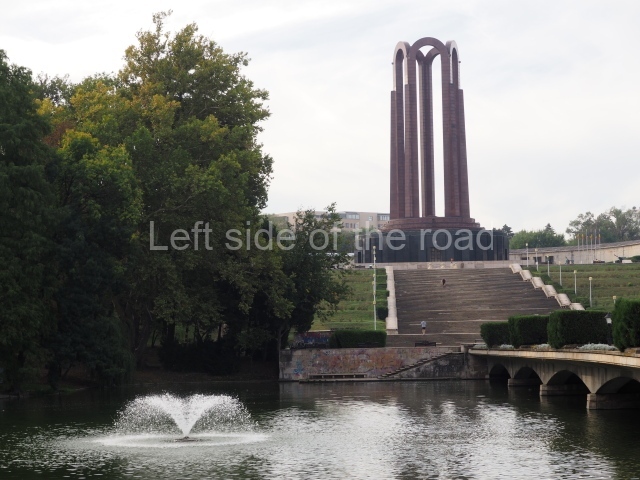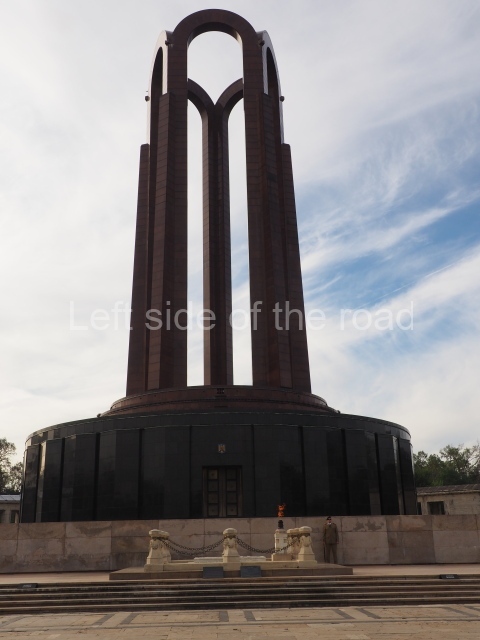The Monument of the Heroes of the Fight for the Freedom of the People and the Homeland, for Socialism
This is a monument situated on a high point, Filaret Hill, in Carol I park, (called Liberty Park during Romania’s attempt to construct Socialism). The park can be found to the south west of the centre of Bucharest (the Old Town).
The site was formerly the location of the Palace of Arts which later housed a military museum but this was damaged first by fire in 1938 and then by an earthquake in 1940. The structure was demolished in 1943 but it wasn’t until 1959 that work began on the monument – which was finally inaugurated in 1963. The structure follows the plans laid out by architects Horia Maicu and Nicolae Cucu. ‘The monument consists of a massive round base, with five slender arches clad in red granite, which reach a height of 48 meters’.
The necropolis is constructed of black and red granite from Sweden and consists of a central mausoleum with a semi-circle of crypts for the burial Heroes of the working class. Inside the central structure were placed the bodies of three, early, prominent Communist leaders – Gheorghe Gheorghiu-De (First Secretary of the Romanian Communist Party from 1944-1965), Constantin Ion Parhon (the first Head of State of the Romanian People’s Republic from 1947 to 1952) and Petru Groza (the country’s first Prime Minister). Their bodies were removed from the mausoleum after the counter-revolution in 1991 and reburied in the city’s cemetery.
There are no names on the tombstones, which are placed outside the semi-circular cloister, so I don’t know if any bodies interred there are still in place or whether they were also removed to other cemeteries.
Now, inside the central structure, in place of the Communist leaders stands a statue of Ferdinand Viktor Albert Meinrad (1865-1927) – the monarch of Romania during the First World War – and the Goddess Nike (representing Victory or the expensive trainers – I don’t know which). The mausoleum is open to the public on Heroes Day, celebrated on Ascension Day (40 days after Easter) and on Army Day, the 25th of October. This seems like a modern version of the ‘extirpation of idolatry’ practised by the Spanish in Peru.
For many years there was a discussion about destroying the monument but in 2006 the decision was taken to keep the structure but it was rebranded as the Memorial to the Heroes of the Nation.
The Tomb of the Unknown Warrior, the work of the Romanian sculptor Emil Wilhelm Becker, was placed in front of the original building and inaugurated on 17 May 1923. This commemorates those Romanians who died in the First World War. This was retained with the construction of the present structure of the late 1950s and is located on a platform in front of, and slightly lower, to that structure. Alongside it is an Eternal Flame which burns to this day. This tomb has a single Honour Guard which I assume, but don’t know for certain, is 24 hours a day. There’s a barracks underneath the whole structure with the entrance towards the back of the cloister.
Placed on the platform of the principal monument are various artillery pieces, ‘guarding’ the monument. They look like 76mm canons produced in the Soviet Union at the time of the Great Patriotic War in the 1940s.
Condition of the monument;
The principal structure looks in good condition but the general environment could be cared for better. There are tacky plastic strips to indicate that people shouldn’t enter the platform around the mausoleum and the cloister is dirty and used to store all kinds of building materials.
Location;
At the bottom end of the park just above a small lake with fountains, approached via a wide tree lined avenue and then a large flight of steps. The monument dominates the park.
GPS;
44.41151 N
26.09683 E
How to get there;
The northern end of the park is about a 20 minute walk from Unirii Park in the centre of Bucharest. Metro station Tineretului is the closest to the southern end of the park and the monument. It’s a walk, uphill west, of about 500m from the station entrance to the memorial.
Opening times;
The Monument is accessible 24 hours a day.
